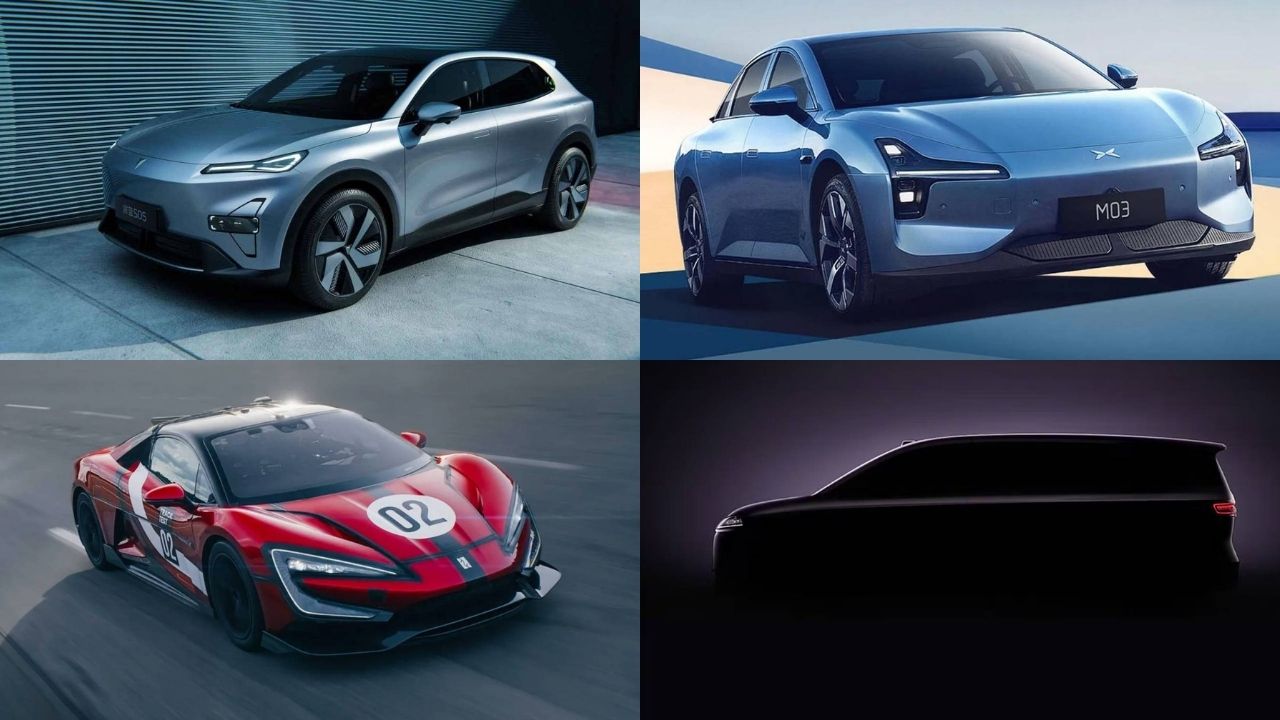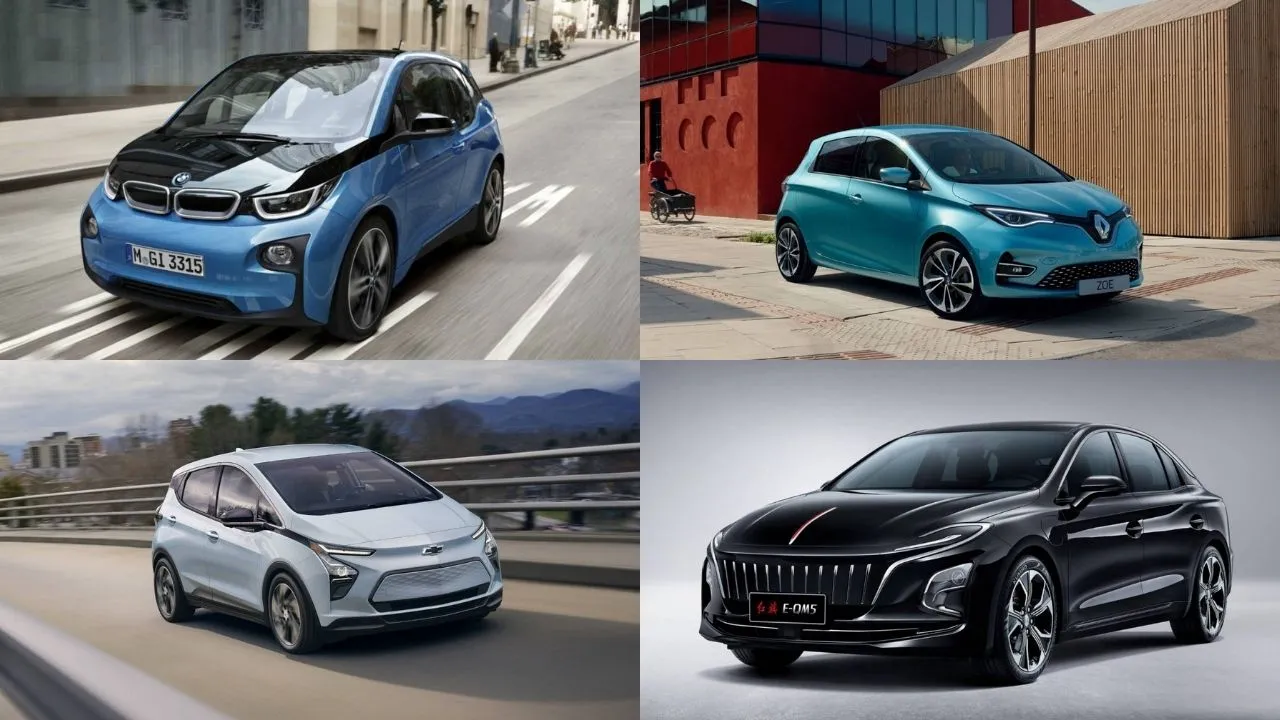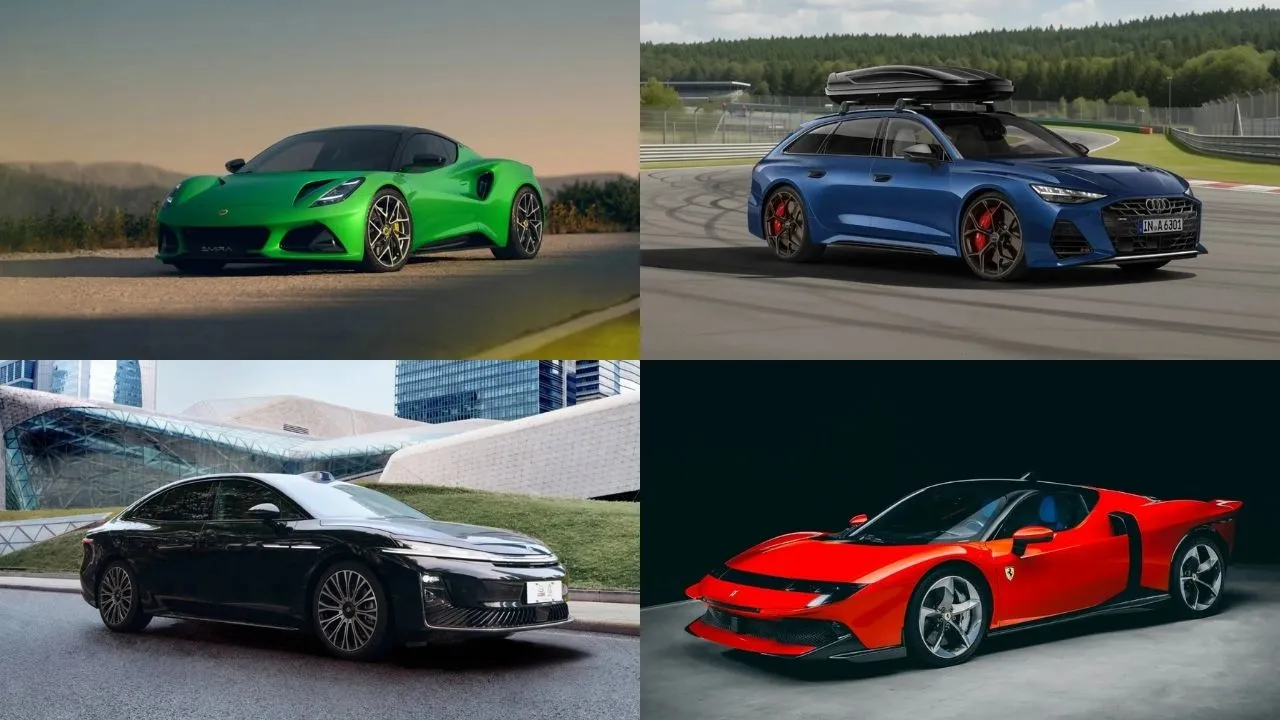DubiCars Car Spotlight — Toyota Hilux History, Generations, Models & More: A Tough-As-Nails Pickup
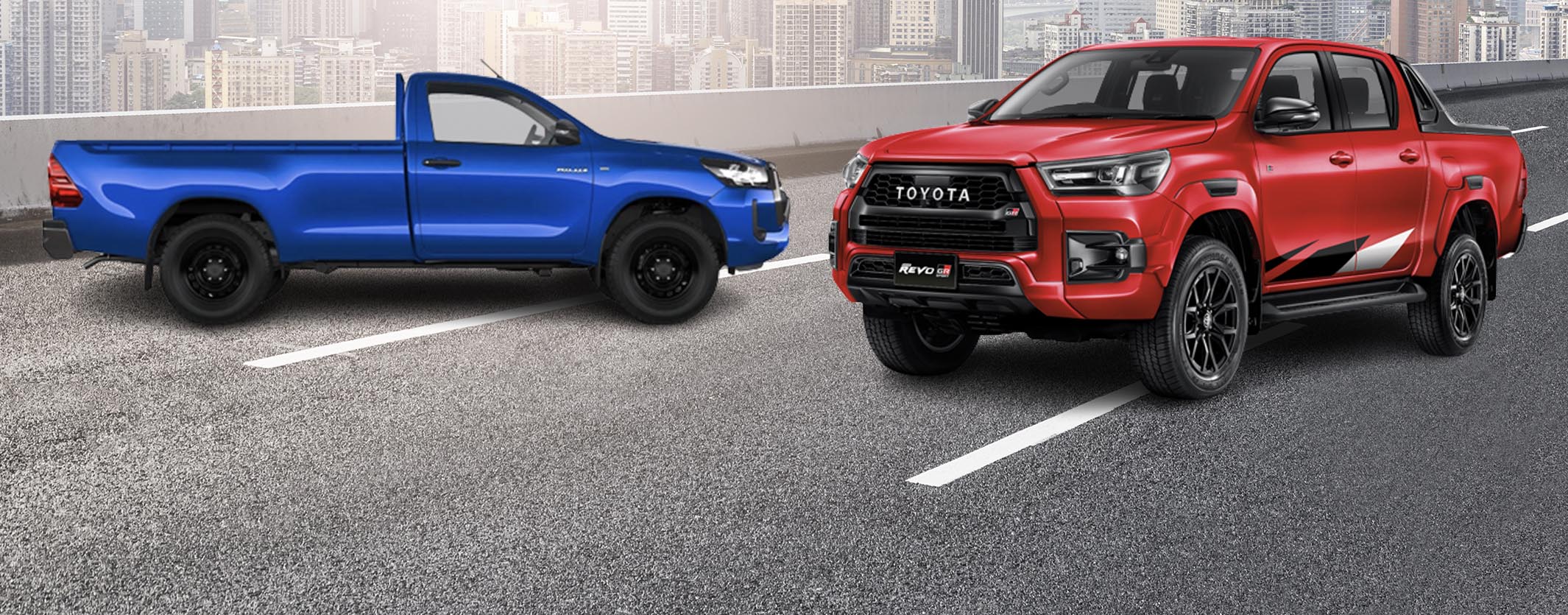
When it comes to pickup trucks, few names resonate as strongly as the Toyota Hilux. With a history spanning over five decades, the Hilux has become synonymous with durability, reliability, and off-road prowess. The Hilux name was derived by combining the words High & Luxury. The pickup was also sold as the Toyota Pickup in the North American Market.

The first four generations of the Toyota Hilux were small, low-riding pickup trucks. With the arrival of the fifth generation, the Hilux became beefier and taller while also receiving a V6 engine option. In this edition of the DubiCars Car Spotlight, we take a look at the history, generations, models, and more of the Toyota Hilux.
First Generation | 1968 – 1972
The story of the Toyota Hilux began in 1968 when Toyota introduced the first-generation model. Initially a compact pickup, it was designed to cater to the growing demand for versatile, dependable workhorses. With a reliable engine and a rugged chassis, it quickly gained popularity among farmers, tradespeople, and outdoor enthusiasts.
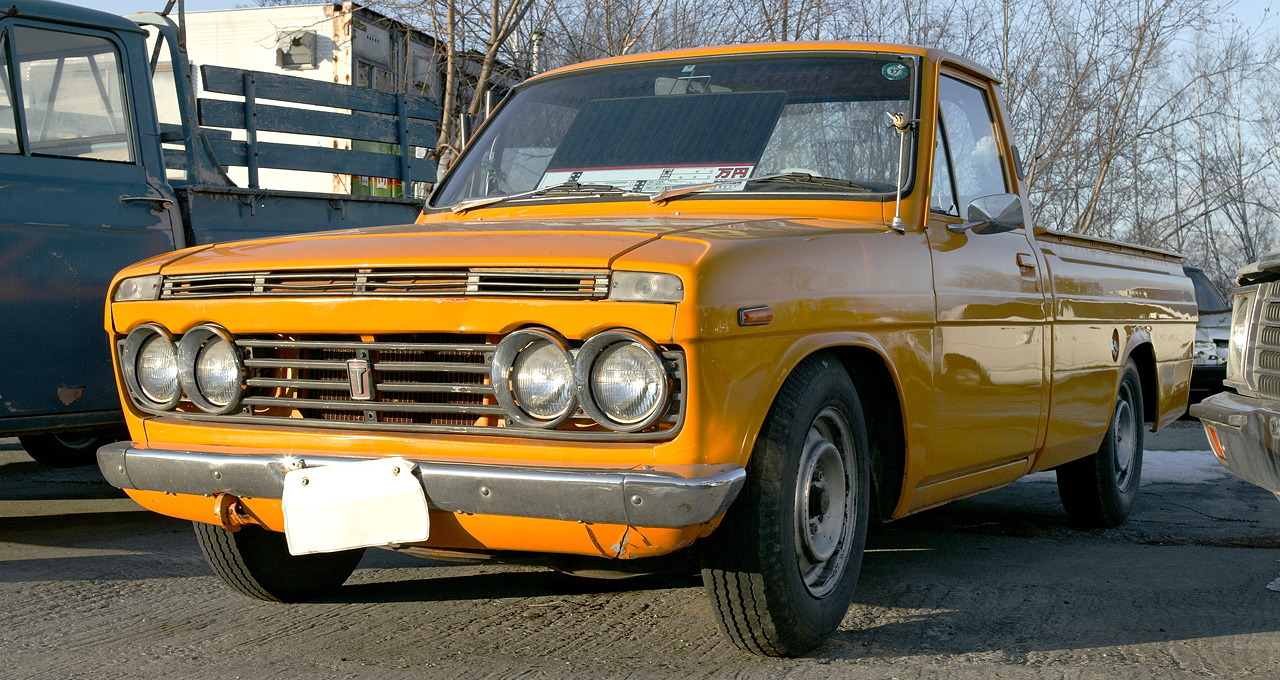
It carried proper old-school looks with quad circular headlamps up front and a large grille, quite typical of JDM cars at the time. However, this one was not performance-oriented. It was powered by inline-4 engines ranging from 1.5-litres to 2.0-litres in size. The Toyota Hilux was assembled at the Hino production facility in Tokyo, Japan.
Second Generation | 1972 – 1978
The second-generation Hilux arrived with a more powerful 2.0-liter engine and a more spacious cabin. It was during this generation that the Hilux started making waves in international markets. Its reputation for durability was further solidified when it became a favorite choice for challenging off-road expeditions.

The second generation also came with a massive redesign, offering premium styling to buyers while still retaining the quad headlamp design. A new redesign in 1975 led to an increase in the dimensions of the pickup truck. For the first time, an automatic transmission was on offer.
Third Generation | 1978 – 1983
The third-generation Hilux saw a significant overhaul in design and performance. It featured a sleeker, more modern look, and Toyota offered a variety of body styles and engine options to cater to a broader range of customers. This generation was instrumental in establishing the Hilux as a versatile and dependable workhorse. Some of them are still used as a workhorse in some parts of the world.
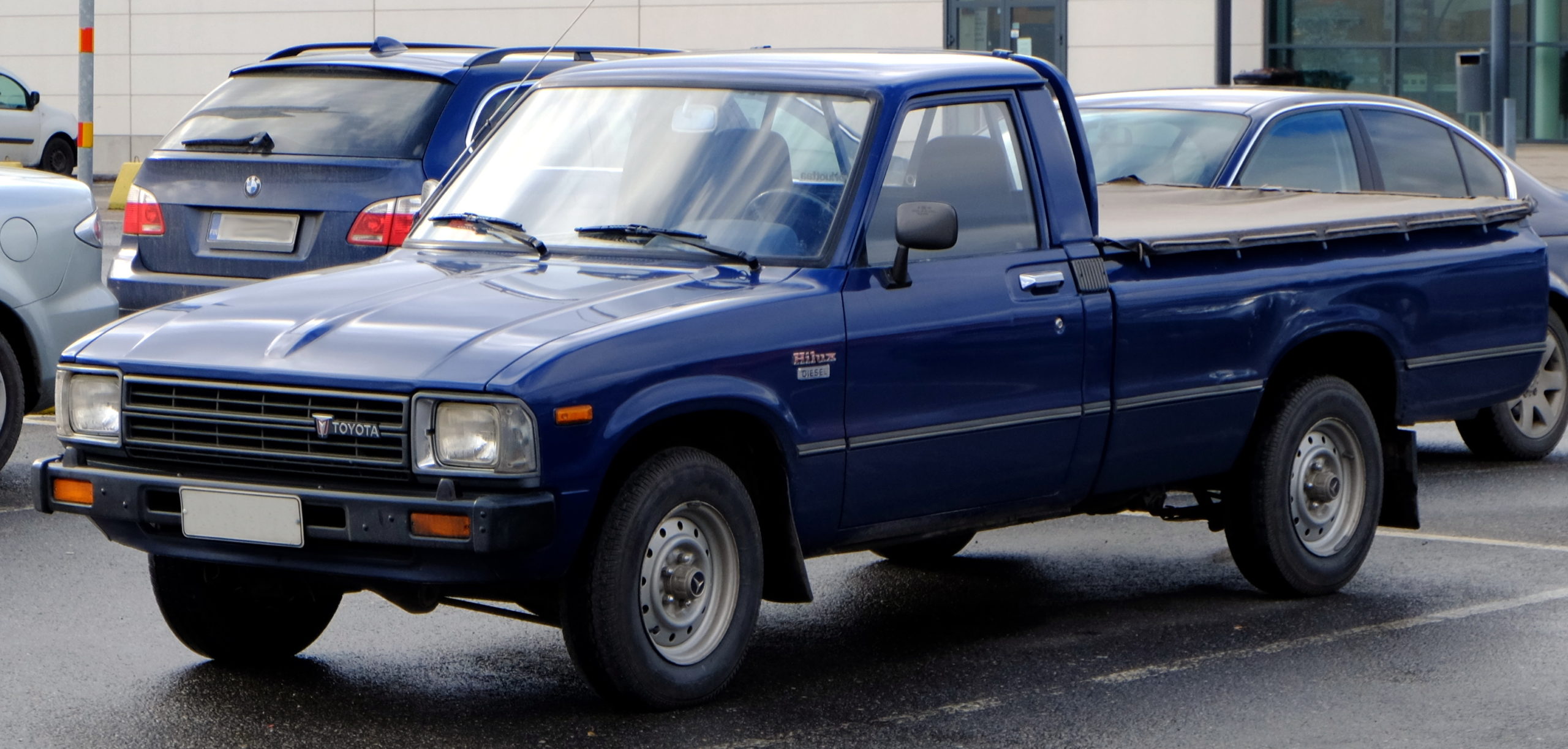
It was powered by a range of inline-4 engines sized between 1.6 to 2.4 litres. For the first time, Toyota debuted a diesel engine on the Hilux. It was a 2.2-litre inline-4 unit that was known for its torquey performance at the time. Transmission options included a 4-speed manual, a 5-speed manual, and a 3-speed automatic.
Fourth Generation | 1983 – 1997
The fourth-generation Hilux continued to evolve with improved comfort and drivability. It introduced four-wheel drive as a standard option, making it even more capable off-road. This generation further strengthened the Hilux’s reputation for being nearly indestructible, often surviving extreme conditions and challenges.

Owing to the diesel engine being widely accepted, more diesel engine options were added to the lineup, while the petrol engine lineup received a boost with the addition of a 3.0-litre V6. Transmission options were updated as well with the addition of a new 4-speed automatic.
Fifth Generation | 1988 – 1997
The fifth-generation Hilux marked another leap forward with more refined styling and enhanced safety features. It was also considered more luxurious and was used as both a reliable work truck and an everyday lifestyle vehicle. This is the generation that the former Top Gear TV show team tried to destroy, albeit rather unsuccessfully, and that only led to it gaining more popularity.

Even in terms of the design, Toyota had pulled off a rugged stance and it was much taller than previous generations. It was powered by four petrol engines ranging from a 1.8-litre inline-4 to a 3.0-litre V6 while diesel-powered models came with either a 2.4-litre or a 2.8-litre inline-4 engine.
Sixth Generation | 1997 – 2005
The Hilux continued to gain traction globally during its sixth generation. It received updates in design, performance, and safety, making it more appealing to a wider audience. It remained a favorite for adventurers and explorers, thanks to its exceptional off-road capabilities. Though many still used it as a farm truck or construction truck, it began to gain more popularity as a lifestyle vehicle.

However, the design and styling were quite identical to the previous generation and by this time period, the competition was producing more stylish pickup trucks. It was available with a wide range of engines, but transmission options only included a 4-speed automatic or a 5-speed manual. To capitalise on the growing SUV market, an SUV version of the Hilux was introduced and it was called the Sport Rider.
Seventh Generation | 2004 – 2015
This is where things turned around for the Hilux. The entire pickup truck market was experiencing a significant shift and buyers wanted pickups with a premium and comfortable interior, a bit of a sporty feel, and yet, could go off-road whenever asked to do so. The seventh-generation Hilux did all this and more.

The outdated Hilux chassis was discontinued and the new one was based on the new Toyota IMV platform. This platform also underpins the Toyota Innova & Toyota Fortuner. The diesel engines available with this generation are still considered among the most reliable engines ever built while several middle-eastern markets prefer either the 2.7-litre inline-4 or 4.0-litre V6 engines.
Eighth Generation | 2015 – Present
The current, eighth-generation Hilux continues the legacy with even more advanced features, improved towing capacity, and enhanced off-road capabilities. It took the meaning of ‘Work & Play’ to the next level. While some are seen lugging loads beyond their rated capacity, others are seen commuting to the office on weekdays and bashing dunes on the weekends.

For the first time, the number of diesel engines powering the Toyota Hilux is higher than the number of petrol engines on offer. In the UAE market though, the same 2.7-litre inline-4 and 4.0-litre V6 petrol engines are still the best-sellers.
The Toyota Hilux has come a long way from its humble beginnings in 1968. With each generation, it has evolved and improved, earning its reputation as one of the toughest and most reliable pickups in the world. From farms to war zones, from deserts to urban jungles, the Hilux is a frequent sight.
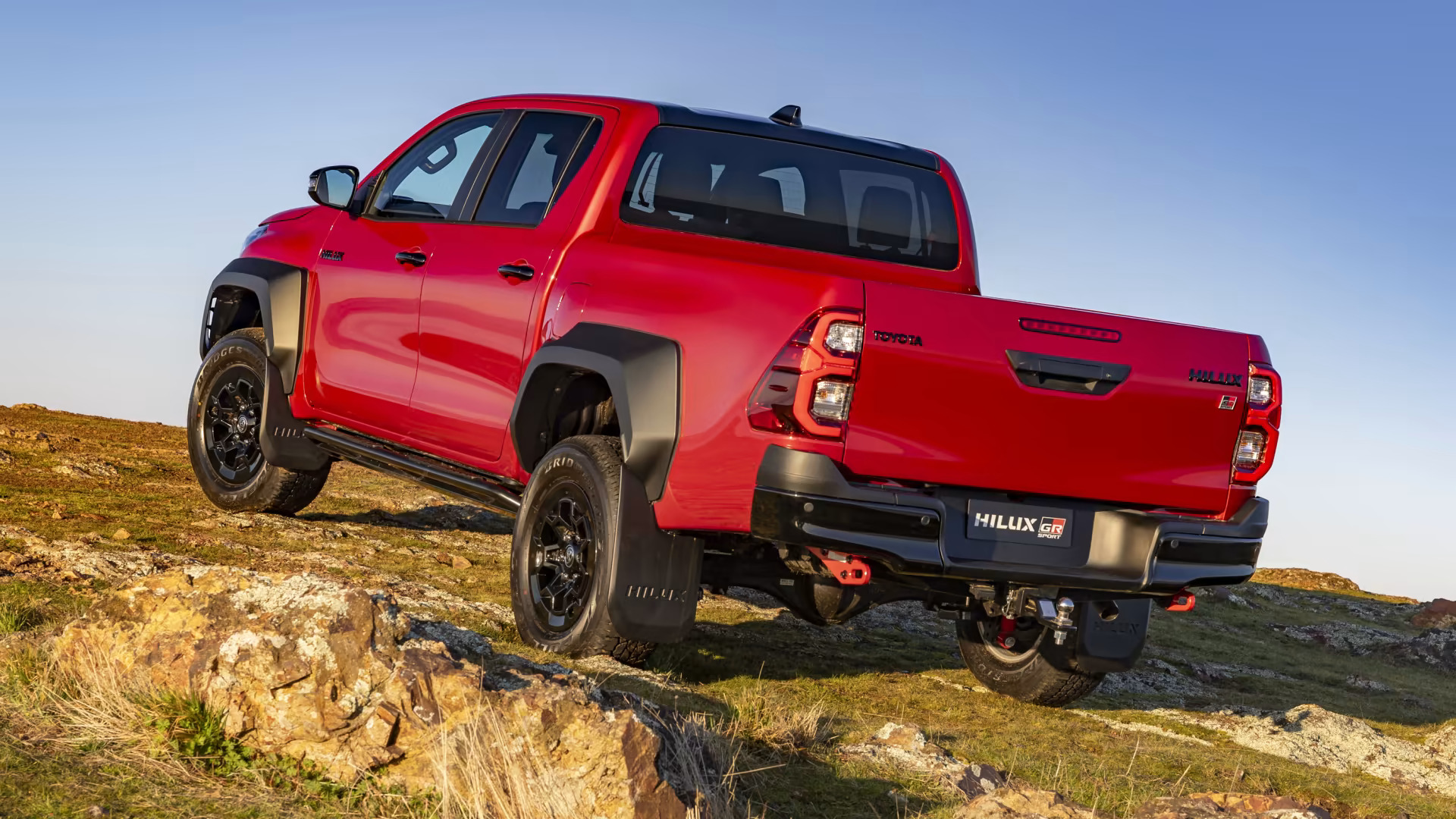
Most Popular Toyota Hilux Generations In The UAE
The seventh generation of the Hilux used to be quite popular during the period it was sold in. However, numbers declined rapidly after production stopped and even though some can still be found on UAE roads, its popularity has reduced. The sixth generation is still valued for its dependability and can be found in several parts of the UAE. However, the most popular generation is the eighth generation.
Find new Toyota Hilux Pickups for sale in the UAE and used Toyota Hilux Pickups for sale in the UAE.
Also Read:
– Geneva International Motor Show Qatar — Schedule, Launches & More Details
– Toyota Hilux Vs Mitsubishi L200 — Battle Of The Japanese Pickups
– Electric Car Vs Petrol-Powered Car Ownership Costs — This Will Surprise You



